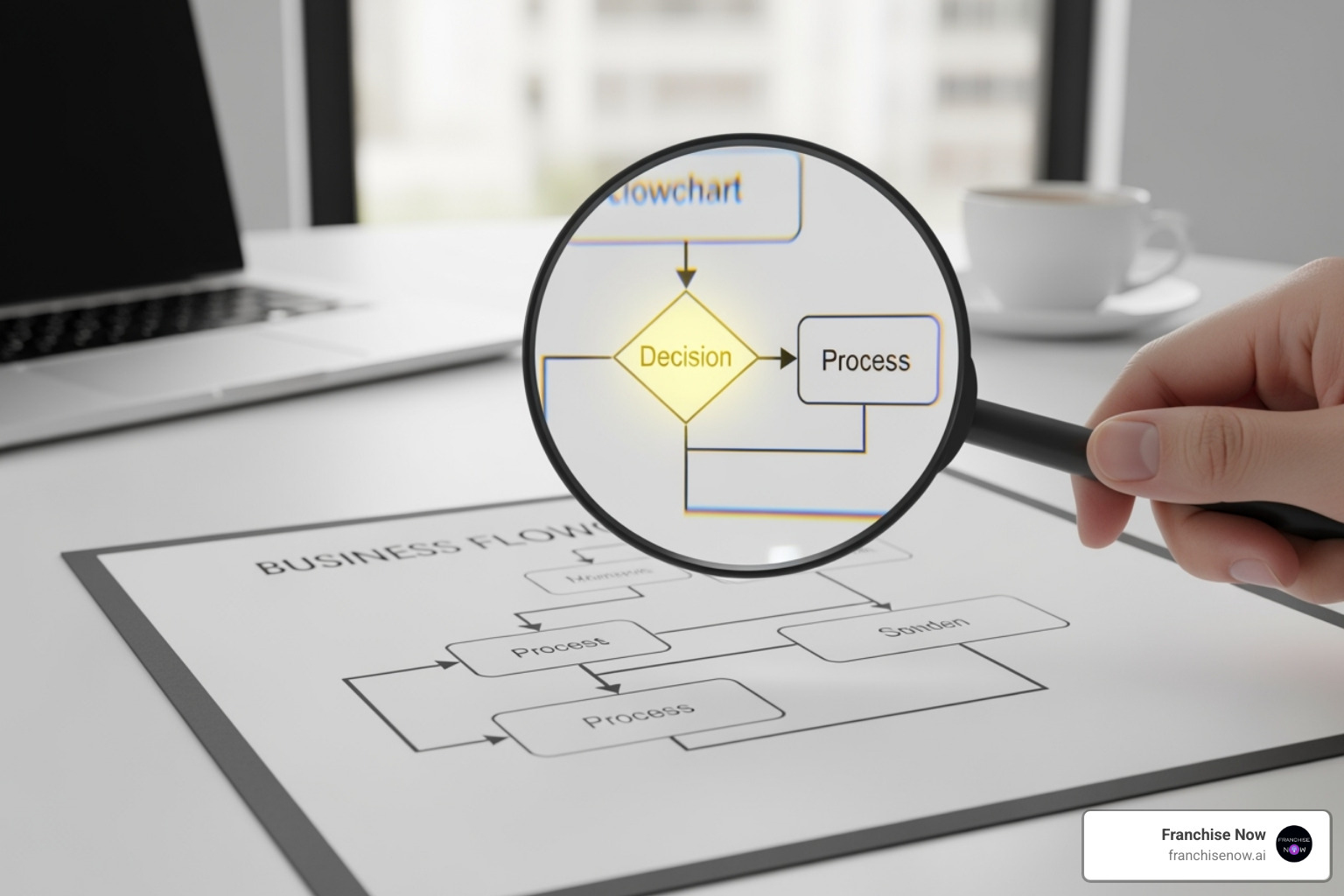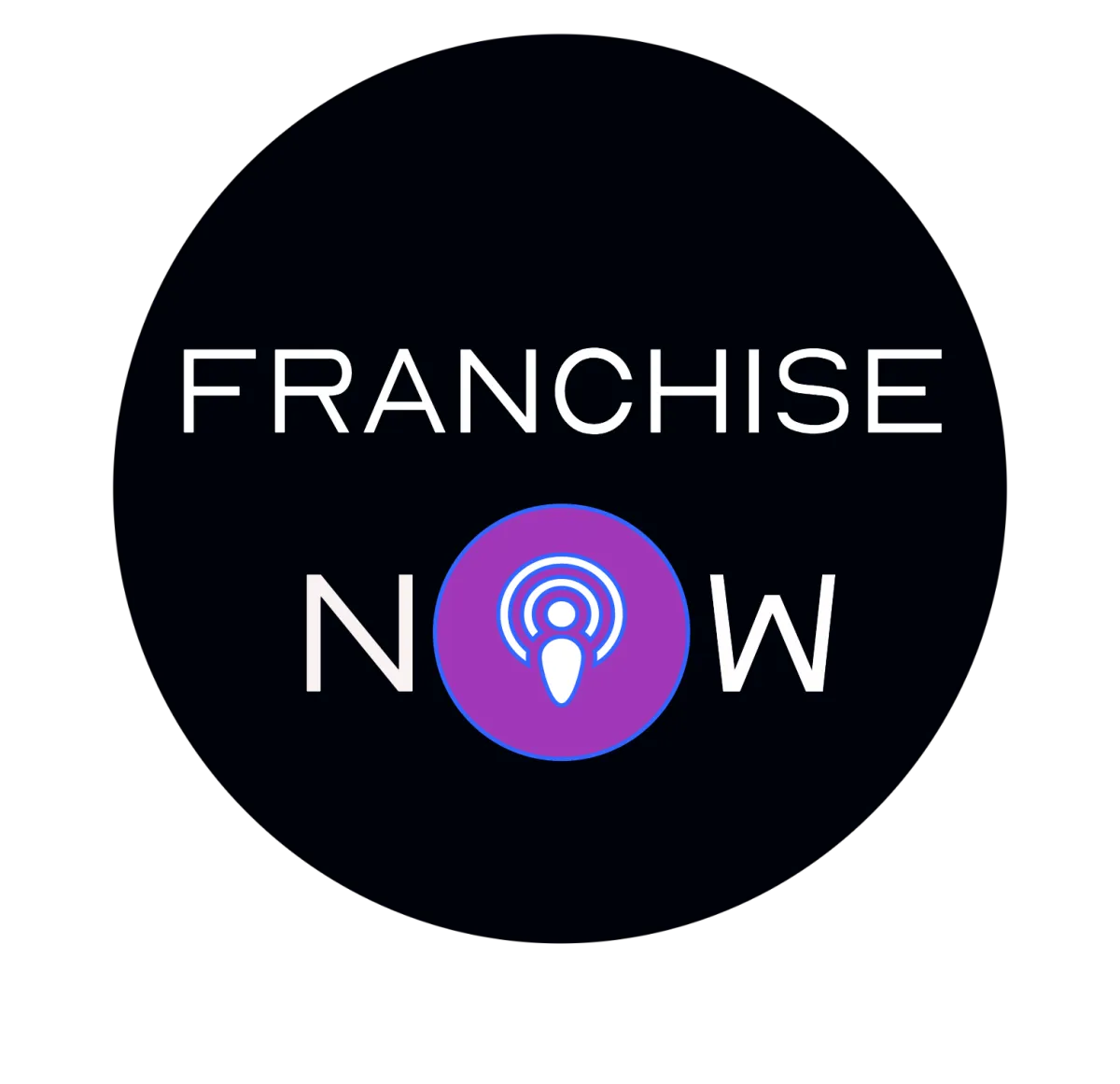
The AI Opportunity Assessment: A Deep Dive into Your Future
Why an AI Opportunity Assessment is Your Strategic Starting Point
An AI opportunity assessment is a structured process to identify where AI can create real value, evaluate your readiness, and build a clear implementation roadmap. Instead of chasing trends, an assessment provides a strategic framework to make smart decisions about where AI will actually move the needle for your business.
An assessment typically includes:
Readiness evaluation - Examining your data, technology, and organizational culture.
Opportunity identification - Pinpointing high-impact use cases for your business.
Prioritization framework - Ranking opportunities based on feasibility, ROI, and strategic fit.
Strategic roadmap - Creating a phased implementation plan with clear milestones.
Success metrics - Defining KPIs to measure impact and guide improvement.
The stakes are high. Generative AI alone is projected to create $2.6 trillion to $4.4 trillion in value across industries. Without a structured approach, businesses risk expensive trial-and-error and missed opportunities. The most successful AI adopters don't rush in; they start with a clear-eyed assessment of where they are, where AI can help, and how to get there systematically. It's not about being first—it's about being smart.
My name is Rob Gandley and I've spent over two decades helping franchise brands steer digital change. An AI opportunity assessment is now the essential first step I recommend to every franchisor looking to leverage automation, improve lead quality, and scale growth without proportionally scaling headcount.
What is an AI Opportunity Assessment and Why is it Crucial?

An AI opportunity assessment is your strategic compass for navigating the AI landscape. It's a systematic process to find high-value use cases that align with your business goals, assess your readiness, and create a realistic implementation roadmap. This process digs into your current operations, data, and team capabilities to uncover opportunities that deliver measurable results.
With the AI hype cycle in full swing, it's tempting to chase every new tool. However, rushing in without a plan leads to wasted resources and disappointing results. An assessment ensures your AI investments align with strategic priorities, not trends. It helps you identify roadblocks early and maximize ROI by focusing on opportunities with both high impact and realistic feasibility.
The payoff is substantial. Strategic AI adoption delivers tangible benefits:
Increased efficiency: Automate repetitive tasks and optimize processes. For example, JPMorgan Chase's COIN program reduced 360,000 hours of annual contract review work to seconds.
Improved decision-making: AI analyzes vast datasets to surface insights for smarter strategic choices.
Improved customer experience: Deliver personalized interactions, AI-driven lead optimization, and helpful 24/7 support.
Competitive advantage: Innovate faster, spot market opportunities, and reduce costs through operational optimization.
Organizations that effectively leverage AI see an average 6.3% increase in business unit revenue from those efforts. With generative AI projected to add $2.6 trillion to $4.4 trillion in value, the question isn't whether AI will transform your industry, but whether you'll be positioned to capture that value.
Assessing Your AI Readiness: The Three Foundational Pillars
Before hunting for AI opportunities, you must honestly assess your organization's fitness for AI adoption. Your readiness rests on three foundational pillars: data infrastructure, technical capabilities, and cultural acceptance. A weakness in any one of these can undermine your entire AI strategy.

Data and Technical Readiness
These first two pillars form the technological backbone of your AI ambitions. AI models are only as good as the data you feed them—the "garbage in, garbage out" principle is absolute.
Pillar 1: Data Readiness. You must evaluate your data's quality, structure, and accessibility. Is your information accurate and consistent? Is it organized for AI consumption? Can your tools access it from various sources like data lakes or data warehouses? Strong data governance is also crucial for compliance and building customer trust.
Pillar 2: Technical Capabilities. This pillar covers the practical skills and infrastructure needed. Do you have in-house talent like data scientists, or a plan to acquire it? Does your IT infrastructure have the scalable processing power AI demands? You'll also need to evaluate AI development platforms, whether open-source, commercial, or cloud-based.
Cultural Acceptance and Leadership
The third pillar is often the most challenging: people. From my experience, AI implementation is 70% about people and 30% about technology.
Cultural acceptance starts with leadership buy-in. Leaders must actively champion AI, allocate resources, and communicate a clear vision. As detailed in The 5 Stages of AI Adoption in Franchising, this top-down support is non-negotiable.
Equally important are employee attitudes. Gauge your team's AI literacy and address their anxieties. The goal is to show how AI augments their roles, handling repetitive tasks to make their jobs more valuable and interesting. A solid change management strategy—with clear communication and training—is essential to turn resistance into acceptance. Fostering a culture of innovation where experimentation is encouraged is the key to open uping AI's full potential.
A Step-by-Step Guide to Your AI Opportunity Assessment
Conducting an AI opportunity assessment is a practical, three-step approach to move from idea to action. It involves identifying opportunities, prioritizing them, and building a concrete roadmap.
Step 1: Identifying High-Impact AI Opportunities
This phase is about finding where AI can solve real problems. Use these methods:
Analyze business processes: Pinpoint bottlenecks and time-consuming manual tasks, like lead qualification in franchise development.
Review customer feedback: Look for complaints about response times or availability that AI could solve.
Examine operational data: Uncover patterns, such as when your best leads arrive or which inquiries convert at higher rates.
Engage stakeholders: Talk to sales, marketing, and franchisees to surface their biggest pain points and ideas.
Explore industry trends: See how others, like Viz.ai in healthcare, use AI to spark ideas for your own business.
Opportunities often involve automating repetitive tasks, enhancing lead generation with AI Agents Changing Lead Generation, optimizing sales funnels, and personalizing customer interactions with 24/7 support.
Step 2: Prioritizing Opportunities
Not all opportunities are created equal. Use a prioritization matrix to weigh potential impact (ROI, revenue, customer experience) against feasibility (data readiness, technical skills, cost, integration complexity). The best opportunities score high on both.
Balance your portfolio with quick wins and long-term projects. Quick wins, like implementing Quick Wins: AI Workflows for Franchisors, build momentum and prove value fast. Long-term projects tackle more complex challenges but can deliver changeal results. A thorough cost-benefit and risk assessment will help you quantify the trade-offs and choose the best path forward.
Step 3: Building Your Strategic AI Roadmap
Your roadmap is the implementation blueprint that turns strategy into reality. It must include:
Clear Objectives: Use SMART goals (e.g., "Increase qualified lead response time to under 5 minutes, improving conversion by 25% in 90 days").
Resource Allocation: Define the people, skills, budget, and technology required.
Timelines and Milestones: Set realistic deadlines and checkpoints to track progress.
Key Performance Indicators (KPIs): Define metrics that measure what matters, such as lead engagement rates and qualification accuracy.
Start with pilot projects—small, controlled tests to validate assumptions before a full-scale rollout. Once a pilot proves successful, your plan should detail how to expand it across the organization, including training and change management. Finally, build in a continuous improvement loop to refine your AI models over time. This approach is central to our work in AI Strategy and Franchise Operations and bridges the gap between AI's potential and your business's results.
From Blueprint to Reality: Implementation, Monitoring, and ROI
With a roadmap in place, it's time to transform planning into action. This phase involves implementing AI initiatives, monitoring their performance, and measuring the value they deliver.
The implementation phase should start with pilot projects. These are small-scale test runs in a controlled environment, allowing you to experiment, learn, and refine. For example, a franchise brand might start by Implementing AI for Franchise Lead Generation in a single territory. This builds confidence and demonstrates value before a larger commitment. Success stories from companies like Viz.ai, Walmart, and JPMorgan Chase show what's possible with well-executed AI.
Monitoring and measurement are crucial for proving the worth of your AI investments. Track specific metrics to see if you're moving the needle:
Operational metrics: Track efficiency gains like task completion speed, error reduction, and cost savings.
Customer-centric metrics: Measure improvements in customer satisfaction, engagement rates, and lead conversion.
Business impact metrics: Calculate ROI by comparing total benefits (cost savings, revenue growth) against total costs (development, maintenance, training). A rigorous approach to AI Metrics and Performance Analysis is essential.
Be prepared for common challenges:
Data quality issues: Messy or incomplete data will undermine AI performance. Address this during your readiness assessment.
Lack of skills: AI talent is in high demand. Plan for strategic hiring or upskilling your current team.
Resistance to change: Overcome this with clear communication, emphasizing how AI augments human roles, not replaces them.
Integration complexity: Connecting new AI with legacy systems can be difficult. This requires skilled IT support and patience.
These challenges are surmountable with a strategic approach, collaboration, and a commitment to continuous learning. AI implementation is a journey, not a one-time project.
The Bigger Picture: Ethics, Future-Proofing, and Economic Impact
Adopting AI isn't just a technical challenge; it's a strategic one with ethical implications. Asking "Should we do this?" is as important as "Can we do this?"
Responsible and ethical AI implementation must be a priority. This includes protecting data privacy to build trust, actively mitigating algorithmic bias to ensure fairness, and demanding transparency and explainability from your AI systems. Establishing clear accountability ensures human oversight where it matters most. Resources like the OECD's insights on future AI risks and benefits offer practical guidance for building trustworthy AI.
Beyond individual businesses, AI is reshaping economies by creating new markets and jobs, as highlighted by McKinsey's research on using AI in economic development. Strategic adoption is key to national and regional competitiveness.
This is why an AI opportunity assessment is so valuable. It's not just about optimizing current operations; it's about future-proofing your business. By continuously identifying and integrating AI opportunities, you build an agile, competitive advantage. A culture of innovation, guided by strategic decisions like those discussed in our AI Franchising 2025 Trends, positions you for sustained success. The businesses that thrive will be those that view AI as an ongoing journey, balancing ambition with ethics and technology with humanity.
Frequently Asked Questions about AI Opportunity Assessments
Here are answers to common questions we hear from franchisors undertaking their first AI opportunity assessment.
What is the difference between exploring AI and actually implementing it?
Exploration is thinking, learning, and conceptualizing—attending webinars or reading articles. Implementation is doing—it requires a structured plan, dedicated resources, and a commitment to action. Exploration without a plan leads to analysis paralysis. An AI opportunity assessment is the bridge that turns vague exploration into a concrete, executable roadmap.
What are some common AI assessment tools and frameworks?
Several proven approaches can help you evaluate your position:
Maturity models: Benchmark your current AI capabilities (data, tech, skills, culture) against industry standards.
ROI calculators: Estimate the financial return of an AI project to help prioritize.
Opportunity scanners: Analyze business operations to identify potential use cases, sometimes using AI itself. The AI Value Tool is one such example.
Prioritization matrices: Visually map opportunities based on dimensions like "Feasibility vs. Impact" to guide decision-making.
Successful assessments often combine several of these tools.
How can I ensure my team is ready for AI adoption?
Team readiness is critical, as people are the hardest part of any AI adoption. Focus on these areas:
Cultural Readiness: Assess team attitudes toward AI. Address concerns directly and emphasize how AI will augment their work, not replace them.
Upskilling and Reskilling: Invest in training programs to equip employees with necessary skills like data literacy and proficiency with new AI tools.
Role-Specific Workshops: Make training tangible by showing teams exactly how AI will help them in their daily tasks, like faster lead qualification for sales.
Leadership Communication: Ensure leaders consistently communicate the strategic importance of AI and their support for employees during the transition.
Internal Champions: Identify and empower enthusiastic early adopters to experiment, share wins, and inspire their peers.
Successful AI adoption is a marathon, not a sprint. Preparing your people is just as important as selecting the right technology.
Conclusion
Here's the truth: diving into artificial intelligence without a clear plan is like setting sail without a map. You might eventually reach land, but it probably won't be the destination you had in mind. An AI opportunity assessment is that map—a critical, strategic exercise that transforms AI from an intimidating buzzword into a practical roadmap for growth.
This isn't a one-time checkbox exercise. It's an ongoing commitment to aligning powerful technology with what actually matters to your business. By honestly evaluating where you stand today, pinpointing where AI can make a real difference, and building a phased implementation plan, you're not just chasing trends—you're creating measurable, sustainable results.
The journey to AI maturity doesn't require a giant leap. It begins with a single, well-planned step. And you don't have to take that step alone.
At Franchise Now, we work exclusively with franchisors who want to harness AI's power without the guesswork. We understand the unique challenges of franchise development—from generating quality leads to nurturing prospects across multiple locations. That's why we provide complimentary AI opportunity assessments to help you build a custom roadmap that fits your specific goals and current capabilities.
Whether you're looking to automate lead follow-up, implement 24/7 AI agents with human rollover for complex conversations, or optimize your entire digital presence with GEO (generative AI engine optimization), we're here to guide you through it. Our fractional CMO support means you get strategic expertise without the full-time expense, and our transparent, source-level attribution ensures you always know what's working.
The AI revolution isn't waiting. But with the right assessment and the right partner, you can enter it confidently, strategically, and profitably.
Take the first step towards your AI-powered future and explore your AI opportunity with us today.

